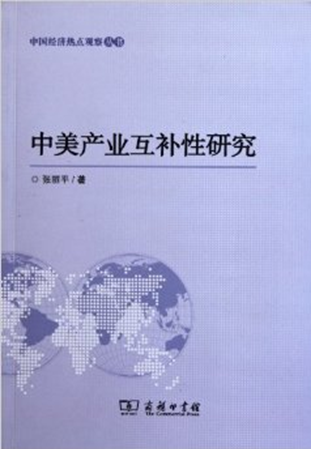The Complementary Relations between Chinese and American Industries
2015-11-09
 |
|
The Complementary Relations between Chinese and American Industries |
By Zhang Liping, Research Department of Foreign Economic Relations, DRC
Abstract:
China and the US are two major economies worldwide as well as major trade partners of one another. Since the formal establishment of diplomatic relations between the two countries, bilateral economic and trade ties have developed rapidly. Meanwhile, conflicts between both countries tend to intensify against the backdrop of financial crisis. Under these circumstances, it is necessary for us to have a clear view on Sino-US economic and trade relations, identify deep-seated forces determining bilateral economic and trade ties, and establish mutually-beneficial bilateral ties. Essentially, Sino-US bilateral economic ties are interconnected, but this kind of complementary relations has objectively led to trade imbalance. Consequently it is necessary to reshape industrial complementary ties between the two countries, so as to grasp opportunities offered by globalization, low-carbon economy, the financial crisis, and American domestic policy adjustments and to fully tap into the advantages of relatively efficient labor force, extensive domestic market potential, higher manufacturing capability and large-scale economic benefits.
In view of the trade-based industrial relations, this book tries to explore the industrial interaction pattern between China and the US, and illuminate deep-seated reasons for Sino-US trade imbalance, and, based on that, it raises China's coping strategies. The book includes seven chapters. Chapter 1: Introduction. It gives an introduction to the book's research implications, objectives, background and specific approaches and methods. Chapter 2: Theoretic basis. It illustrates the relevant theories and studies on industries and trade, which provide valuable evidence and references to this book. Chapter 3: Differences between the two countries' industrial structures. By analyzing macro-data and establishing differentiated indexes of both industrial structures, it enumerates the evident differences between industrial structures of the two countries, which are the prerequisite and basis for analyzing the industrial complementarity between China and the US. Chapter 4: Correlations between industries of China and the US. Through analysis of linking channels of trade, investment and finance, it probes the correlation between bilateral industries, which is highly indispensable for the formation of complementary relations between the two industries and only correlated industries can form such relations. Chapter 5: Proof for industrial complementarity in bilateral trade. It examines the bilateral complementarity respectively from the angle of economic interconnection, industrial competitiveness and complementary characteristics of major industries. Chapter 6: Causes and functions of bilateral industrial complementarity. It analyzes forces enabling formation of such complementarity from the perspective of international division of labor, cross-border industrial transfer and international value chain. The formed complementarity has exerted significant influence on both countries' economic development. Chapter 7: Policy options. On the basis of above analysis, it maintains that China should commit itself to building a more equal and mutually-beneficial industrial complementary relationship with the US in the future. To reach this goal, the Chinese government should adopt more proactive policies and measures.
This book is written by Zhang Liping, Director of Research Office of the Research Department of Foreign Economic Relations of DRC. Some of the views in this book might be inappropriate. It is hoped that readers of this book would not spare their comments and corrections.














